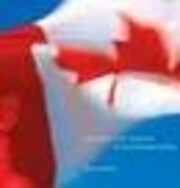

Klik op een omslag om naar Google Boeken te gaan.
|
Bezig met laden... I Stand for Canada: The Story of The Maple Leaf Flagdoor Rick Archbold
 Geen Bezig met laden...
Meld je aan bij LibraryThing om erachter te komen of je dit boek goed zult vinden. Op dit moment geen Discussie gesprekken over dit boek. Geen besprekingen geen besprekingen | voeg een bespreking toe
Beautifully illustrated and dramatically told, this is the story of Canada’s most recognized visual emblem, its proudest national icon, and its most successful brand logo: the red maple leaf flag. Our flag is seen by millions of Canadians every day and by millions more people around the world. Its elegantly simple design is instantly identifiable, whether worn as a shoulder patch on the uniform of a Canadian peacekeeper or held high by the athlete chosen to lead Canada’s team into the Olympic stadium. At home, we encounter the maple leaf symbol wherever we look: along the Trans-Canada Highway, at the entrance to national parks, flying over more than 20,000 federal government offices, in the skies on Air Canada planes. From bacon and beer to berets and badges, the stylized red maple leaf has become our nation’s most successful brand and visual emblem. I Stand for Canadachronicles the evolution of the maple leaf as Canada’s pre-eminent symbol, from its first appearance in French colonial times to its ubiquitous 21st-century presence, central to the corporate identity programs of countless companies and organizations. The distinctive shape of the native sugar maple leaf was familiar to every settler of New France and then of British North America; it was the first emblem of the St. Jean Baptiste Society, founded in 1834, and in 1860 it was incorporated into the badge of the Royal Canadian Regiment. By Confederation, it was a widely accepted motif for the new nation; that year Alexander Muir composed “The Maple Leaf Forever,” which served as its informal anthem. The majority of badges worn by soldiers of the Canadian Expeditionary Force in World War I incorporated the maple leaf into their design, and the Canadians who fought in Europe under a British flag returned home with a newly minted sense of national identity, made material by the maple leaf emblems they’d worn into battle. Parliament’s first two attempts to establish a distinct Canadian flag, in 1925 and 1946, ended in stalemate, and it was not until 1964, when the nation was almost a century old, that Prime Minister Lester Pearson dared to inaugurate the political debate that would decide the issue. The entire country got into the fight, and the flag threatened to divide the country instead of bringing it together. In desperation, Pearson agreed to turn the decision over to an all-party committee, which considered several thousand possible designs, including offerings from the Group of Seven’s A.J. Casson and A.Y. Jackson. After the longest debate in Canadian parliamentary history, the House of Commons voted to adopt the flag committee’s surprisingly successful compromise. On February 15, 1965, Canada’s official flag was raised for the first time on Parliament Hill. In the 37 years since, the maple leaf flag has become our symbol of national pride, the unique and perfect Canadian logo – and Canadians, for all their supposed reticence, have become a nation of exuberant flag-wavers. I Stand for Canadais the first comprehensive work on the origins, evolution, political history, and cultural significance of Canada’s flag, one that combines rare archival illustrations and stunning contemporary images with a richly detailed and engaging narrative. Geen bibliotheekbeschrijvingen gevonden. |
Actuele discussiesGeen
 Google Books — Bezig met laden... Google Books — Bezig met laden...GenresDewey Decimale Classificatie (DDC)929.92History and Geography Biography, genealogy, insignia Genealogy; Heraldry FlagsLC-classificatieWaarderingGemiddelde: Geen beoordelingen.Ben jij dit?Word een LibraryThing Auteur. |
||||||||||||||||||||||||||||||||||||||||||||||||||||||||||||||||||||||||||||||||||||||||||||||||||||